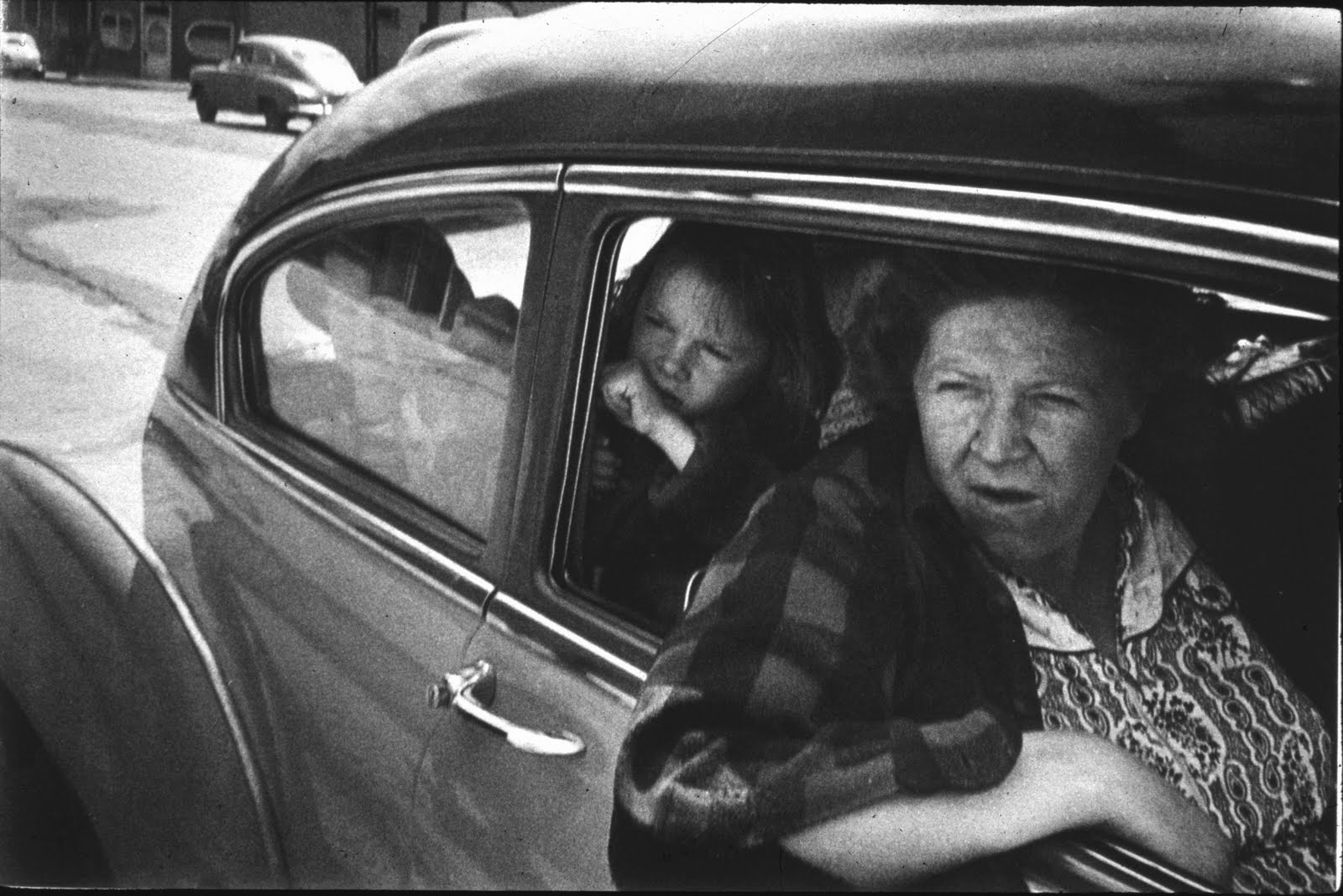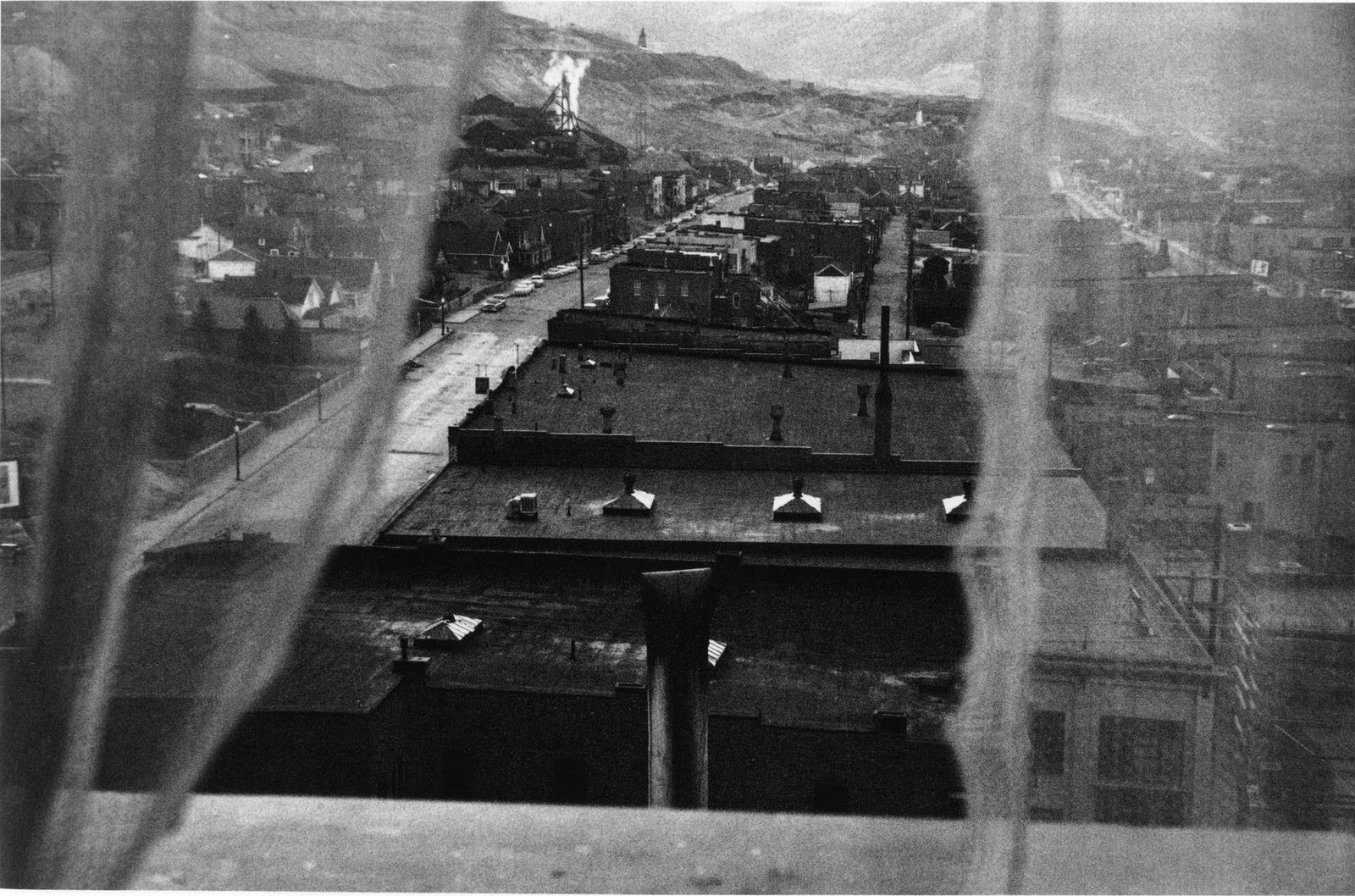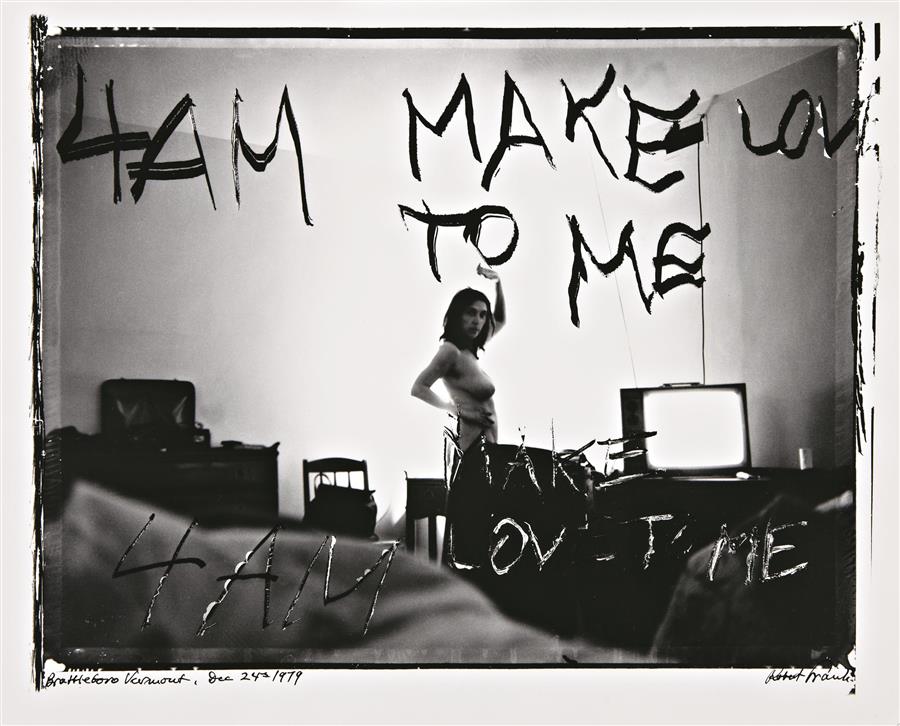Half the time the photographers seemed not to have even looked through the camera. Far from seeking the perfect composition, the ‘decisive moment’, their work seemed curiously unfinished. It captured ‘indecisive’ rather than decisive moments.
By Gerry Badger
“Frank… and Klein brought to the decade a feeling for its woes which, in retrospect, synthesizes it for us. There hovers in their work an oppressive sense of the odds against which people struggled, the dismal mood and chance of defeat that lowered the emotional horizon. This was all the more striking because of the general affluence of the period, underway shortly before the start of Frank’s and Klein’s major effort, in the great boom of 1955.
These transplanted photographers found live and visual metaphors for the bleakness of this Cold War moment, and the deadness of the things in it. For those who remember the era, these photographic evocations of it have the keenest resonance; for those who came later, The Americans and New York offer a wondrous guide.”
Max Kozloff
In the United States during the mid-1950s, two photographers were each making the works that would eventually form two of the most renowned photobooks of the twentieth century – William Klein’s New York (1955) and Robert Frank’s Les Americains (1958). Both were expatriates of a kind, one returning for a brief period to his homeland after living in Europe, the other an immigrant to the United States from Switzerland. Though very different from each other, these two books introduced a new kind of attitude into photography. The work was rough, raw, and gestural. It was spontaneous and immediate, highly personal, echoing both the uncertain mood of the era and the characteristics that marked much of the art – especially the American art – of the 1950s.
Half the time the photographers seemed not to have even looked through the camera. Far from seeking the perfect composition, the ‘decisive moment’, their work seemed curiously unfinished. It captured ‘indecisive’ rather than decisive moments. It was exciting, expressive, flying in the face of accepted photographic good taste. Importantly, this was a style whose informality was far better suited to the book form than to display as individual prints on a wall.
Such was the spontaneity and intuitive quality of this kind of work that we might term it ‘stream-of-consciousness’ photography, the visual equivalent of the stream-of-consciousness writing of the 1950s American ‘Beat’ writers such as Jack Kerouac, William Burroughs and Allen Ginsberg. It is a quality that runs through much 1950s American art – bebop jazz, the ‘action painting’ of Jackson Pollock and his Abstract Expressionist colleagues, method acting, hand-held movie making, improvised performance art. And just as documentary photography and the realist spirit in art was a direct response to the Depression and the 1930s, stream-of-consciousness art, in whatever medium, was a direct response to the Cold War and the 1950s.
America, like Japan and Europe, was recovering from the war, but the ‘hot’ war had been replaced by the Cold War and the threat of nuclear annihilation. The late 1940s and 50s therefore, were years of angst for many Americans. The Cold War began at home, with a return of the ‘Red Scares’ of the 1920s. McCarthyism, and the notorious House Un-American Activities Committee (HUAC), established in 1937 to root out subversive and ‘Un-American’ activities, established a climate of fear, betrayal, distrust, anxiety and paranoia that particularly hit the arts.
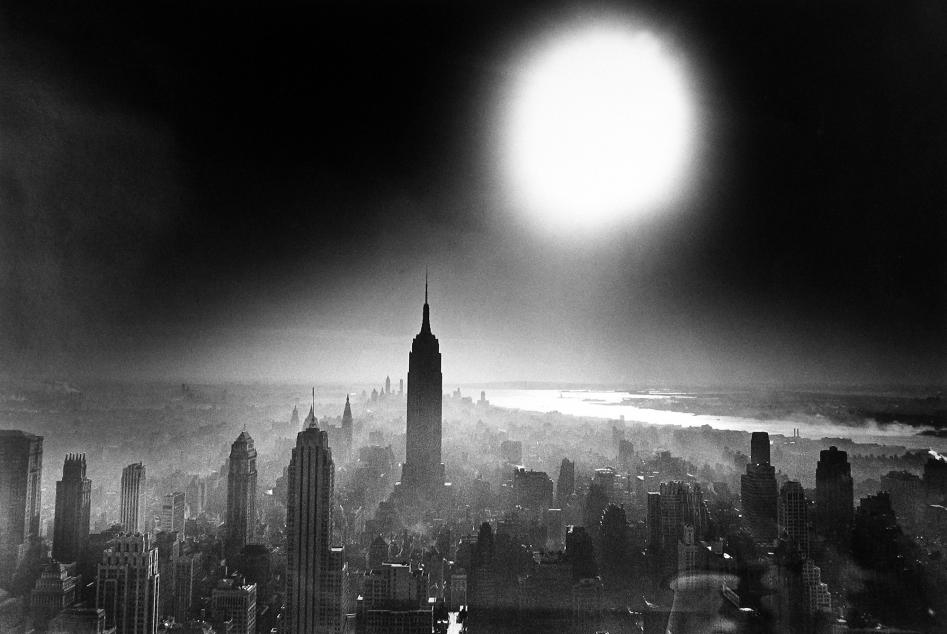
Atom Bomb Sky, New York, 1955
Paradoxically, during this age of anxiety, the United States entered an age of almost unprecedented prosperity. High employment levels led to an orgy of consumer spending. The arts too, despite – or perhaps because of – the strictures of MacCarthyism, enjoyed a period of unmatched vigour.
Paradoxically, during this age of anxiety, the United States entered an age of almost unprecedented prosperity. High employment levels led to an orgy of consumer spending. The arts too, despite – or perhaps because of – the strictures of MacCarthyism, enjoyed a period of unmatched vigour. Abstract Expressionism, a gestural painting style developed in the lofts of New York, not only replaced the Social Realism of the 1930s, but outmatched anything being done in Europe. Whereas before the War the United States had usually looked to Europe in order to see what was happening, now Europe looked to the United States. New York replaced Paris as the epicentre of the international art market, and at the beginning of the 1950s, Jackson Pollock supplanted Pablo Picasso as the world’s most renowned painter.
Early Abstract Expressionism owed a sizeable debt to Dada and Surrealism, derived partly from the émigré refugees from Hitler who had migrated to New York, and partly in response to the war and the political climate of the Cold War. There was a turning inward, away from the social and psychological expansiveness of social realism, to the hermetic individualism of the subconscious and the intuitive. This is not to say that New York artists in the 1940s and 50s were any less concerned with the state of the world, but they expressed it differently – filtering it first through their own direct experiences. The filter was a safety valve against the nuclear threat and the social and political strictures of the time. Most serious artists feel that they are ‘outside’ bourgeois society to one degree or another, but 1950s New York art – frantic, raw, aggressively individualistic, alienated, incomprehensible compared to what had immediately preceded it – was particularly defensive, taking great pains to obscure its political and social concerns through the use of shock tactics. As Norman Mailer put it in ‘The White Negro’, his famous essay on the ‘hipster’:
On this bleak scene a phenomenon appeared the American existentialist – the hipster, the man who knows that if our collective condition is to live with instant death by the atomic bomb … why then the only life giving answer is to accept the terms of death as immediate danger, to divorce oneself from society, to exist without roots, to set out on that uncharted journey into the rebellious imperatives of the self. (2)
In order to tap into the self and this great well of personal experience, art became about process. The Surrealist concept of automatic drawing or writing was revived, though in a particularly American way. The act of doing it, working fast and letting it spill out from the subconscious through the intuitive act of making it, became almost more important than the work itself. The archetypal image of 1950s American art is Hans Namuth’s film of Jackson Pollock making a ‘drip painting’ – dancing round the canvas like a jazz dancer, flicking paint on to it with all the casual, concentrated panache of Joe di Maggio hitting a home run.
The literary equivalent of Abstract Expressionism was the Beat Generation, and Pollock’s alter ego in the world of American letters was Jack Kerouac. With the publication of his second novel, On the Road in 1957, Kerouac became an instant celebrity. Written on a single roll of unbroken paper during a frenetic three-week period in 1951, the book became one of American art’s talismans, not only the most important and durable monument of stream-of-consciousness writing, but the most infallible guide to the social mores of the young rebels without a cause.
And as William B Scott and Peter M Rutkof have observed, Keruoac and his fellow Beat writers not only prized the experimental and the spontaneous, but had actually experienced the lifestyle described in On the Road. They
Exemplified the post-war avant-garde’s sense of profound alienation from the society they sought to understand. Identifying with the outcast and the outlandish, with black jazz music and consciousness expanding drugs, they crisscrossed America in the late 1940s and early 1950s in search of themselves and a truth they believed hidden by the stifling conventions of middle class culture. (3)
In 1955, Alexander Liberman at Vogue Magazine, hired a young photographer named William Klein… it was Liberman who helped considerably with the gestation of one of the most influential photobooks of the 1950s – William Klein’s New York – or to give it its full, hip, Beat title, Life is Good and Good For You in New York: Trance Witness Revels.
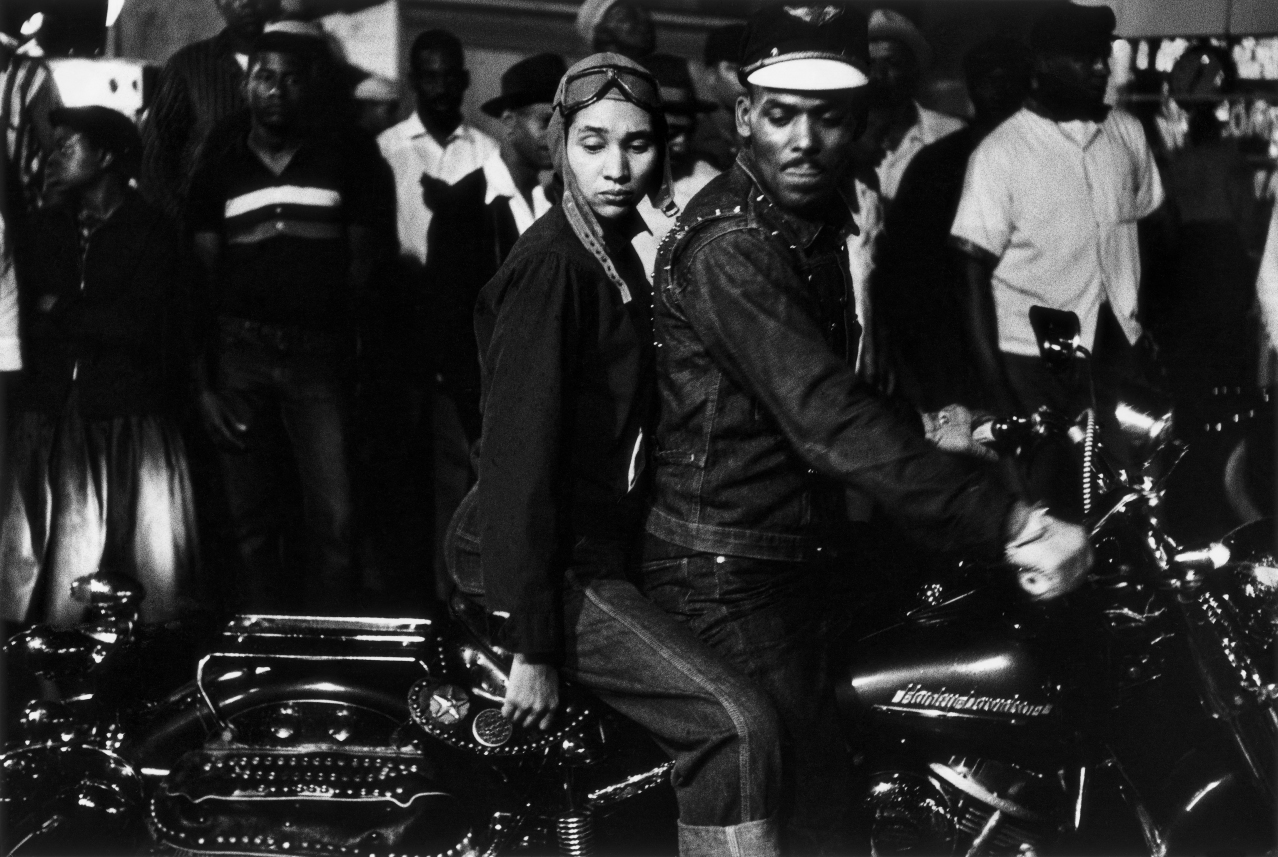
In 1972, Frank’s second photobook masterpiece, The Lines of My Hand, was published in Japan, and then in an American edition by Ralph Gibson’s Lustrum Press. The publication of The Lines of My Hand in Japan was confirmation of the fact that the stream-of-consciousness style was the prevailing mode in Japanese photography in the late 1960s and early 70s.
Klein had worked in Paris for eight years and had moved from abstract painting to abstract photography. He returned to New York in 1954 and carried out Vogue assignments for Liberman. As so often happens with returning expatriate artists, he saw his home town with fresh eyes. Struck by the city’s brash energy and the raw photographs in tabloid newspapers like the New York Daily News, he began to photograph on the streets. Thanks to Liberman, he was able to use liberal amounts of film, and had full access to the Vogue darkroom. On the surface, the results were akin to the confrontational, ‘in-your-face’ street photographs that others, such as Louis Faurer and Leon Levinstein were making, yet they were invested with Klein’s own brand of high-octane energy.
Additionally, unlike others who were out photographing on the streets, Klein was shooting specifically with a book in mind, mentally collating and sequencing even as he made the images, over a period of about three months. (4) Ironically, this greatest of 1950s photobooks by a native American was never published in the United States. Due in the part to the efforts of Chris Marker, who would later become an important documentary film-maker, the book was published in 1956 by Éditions du Sueil in Paris, with editions in England and Italy.
The tenor of Klein’s book is uncertain, aggressive, bleak, but it is also fashionably manic in its romantic Beat energies. It is patently less of a socio-political statement than Robert Frank’s The Americans, which would follow Klein’s lead. However, New York had enough bite, both as a document of an anxious era and as a book statement to ensure that it was enormously influential, especially in Europe and Japan. Its impact was more occluded in the United States, but if it had been published there, it possibly would have eclipsed The Americans, if only for the fact that Klein was a more accessible role model than Frank.
The two great 1950s surveys of America in photobooks were both, so to speak, views from the ‘outside’. While the expatriate Klein was photographing New York, the immigrant Robert Frank was making a series of road trips across the country in classic Beat style, photographing under the auspices of a Guggenheim Fellowship. The result was The Americans. Frank’s book, like Klein’s, was first published in Europe, by Robert Delpire in Paris, but – retitled The Americans – it also appeared in New York in 1959. There, it was profoundly influential on those young photographers sympathetic to its iconoclasm, and its reverberations spread out steadily throughout the 1960s. The hostile response from the old guard to Frank’s shabby shocker of a book was almost guaranteed to endear him to a younger generation already at odds with the saccharine diet of Look or Life. It was also in complete contrast to the easy platitudes of the most popularly lauded photographic enterprise of the day, Edward Steichen’s ‘The Family of Man’ (1955), which he billed as ‘the greatest photographic exhibition of all time’, and which featured feel-good photojournalism at its most sententious. Frank’s casual, offhand approach, his ‘bracing, almost stinging manner’, (5) and above all, the other-side-of-the-tracks iconography drawn almost directly from On The Road, struck an immediate chord.
The beat existentialism of the Klein/Frank persuasion was also at work in European photography, particularly in Holland and Scandanavia. Still an underrated figure both in photography and photobook-making, The Dutchman Ed van der Elsken was a freewheeling traveller like Klein or Frank, except that his territory was the world, especially the Far East. He was also a prolific maker of books. He and his compatriot Johan van der Keuken redirected the more socially inclined outlook of humanist documentary photography inward, making a photography that was as much about the process of its making as it was about the wider world. They began to develop a book form termed the beeldroman (the photonovel), an essentially self-reflexive genre. Van der Elsken’s Een Liefdesgeschiedenis in Saint Germain des Prés (Love on the Left Bank, 1956), is perhaps the epitome of the genre, a diaristic but fictionalized look at the photographer’s friends and lovers during his stay in the Left Bank area, the very home of Existentialism. He also made what is arguably the best photographic book on jazz, simply entitled Jazz (1959), but his masterpiece is Sweet Life (1966), a sprawling odyssey of a book, as exuberant as Klein’s New York.
In 1972, Frank’s second photobook masterpiece, The Lines of My Hand, was published in Japan, and then in an American edition by Ralph Gibson’s Lustrum Press. The publication of The Lines of My Hand in Japan was confirmation of the fact that the stream-of-consciousness style was the prevailing mode in Japanese photography in the late 1960s and early 70s. The stream-of-consciousness style was related to an era, and, as we have seen, gradually transformed itself at the end of the 1960s into the personal documentary, or snapshot mode. Its influence, however, remains, for it is related to a fundamental impulse in photography – to make a visual diary of one’s life. This was due mainly to the freewheeling existential approach of a coterie of photographers centred around the magazine Provoke. Leading foreign photographers such as Klein and Van der Elsken had visited Japan and been extremely influential, and the interest in the gestural style led the publisher Yugensha to give Frank the full de luxe Japanese photobook treatment in The Lines of My Hand, thanks to generous sponsorship from Kazuhiko Motomura, a notable Frank aficionado. Frank hadn’t made much new work since the beginning of the 1960s, but as he showed here, and in another Yugensha/Motomura collaboration in 1987, Flower Is, he was a highly imaginative repackager of his old material.
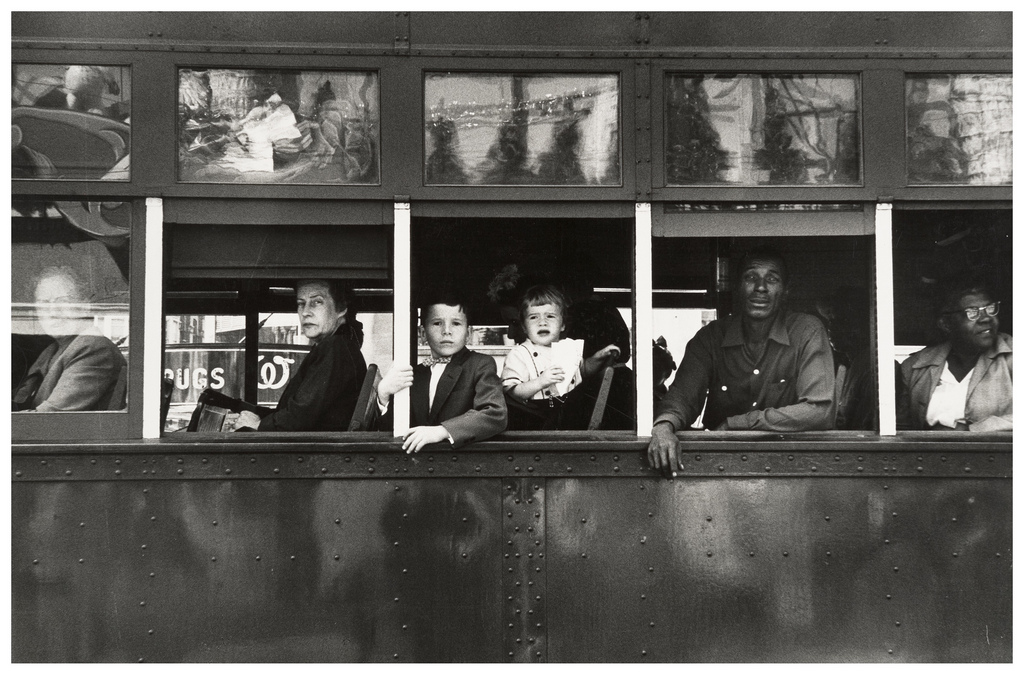
Trolley, New Orleans, 1955
The stream-of-consciousness style was related to an era, and, as we have seen, gradually transformed itself at the end of the 1960s into the personal documentary, or snapshot mode. Its influence, however, remains, for it is related to a fundamental impulse in photography – to make a visual diary of one’s life.
In many ways, The Lines of My Hand can be regarded as the apotheosis of stream-of-consciousness photography. Along with two Japanese masterpieces, Takuma Nakahira’s For a Language to Come, published in 1970, and Daido Moriyama’s Bye Bye Photography, published in 1972, Frank’s great confessional both sums up and marks the end not only a photographic era, but a final coming to terms with the effects of World War II and the Bomb.
When Frank opined that ‘Black and white are the colours of photography’, he summed up both a photographic genre and an era. The visions of Frank, Klein, Van der Elsken and the Provoke group had been the photographic equivalent of film noir. And if classic stream-of-consciousness photography could only be done in black and white, the 1970s would inevitably bring that era to a close. By the end of the 1960s, the world’s political choice, which had in the 1950s been couched in black or white – communism or democracy – began to seem much more complex. There was at least a modicum of hope in the air, and the world itself seemed to have become more colourful.
In 1972 Stephen Shore’s series American Surfaces, a suite of 320 prints, was shown at Light Gallery in New York. The whole show was purchased by Weston Naef for the Metropolitan Museum of Art, (6) demonstrating that the medium had become a good deal more respectable. Four years later, a book was published to accompany an exhibition at the Museum of Modern Art, by a little-known photographer called William Eggleston. The work of both Shore and Eggleston was diaristic, spontaneous, in the best stream-of-consciousness manner – apparently about little except the photographers’ private sense impressions. It nevertheless differed from anything done by the Beat photographers, the social landscapists, or the European and Japanese existentialists in one essential respect – the photographs were in colour. They thus represented a giant step for the medium. Photographers had been using colour for at least a decade and a half before the more avant-garde practitioners began tentatively to explore its potentiality, but it took the imprimatur of the Metropolitan and the Museum of Modern Art rather than Life magazine to make it seriously accepted by the more artistically ambitious photographers, and even then only after a lengthy struggle.
The stream-of-consciousness style was related to an era, and, as we have seen, gradually transformed itself at the end of the 1960s into the personal documentary, or snapshot mode. Its influence, however, remains, for it is related to a fundamental impulse in photography – to make a visual diary of one’s life. As stated before, Walker Evans wrote that at the heart of Atget’s photography was ‘the projection of Atget’s person’. (7) Atget’s formal style may have disguised this to an extent, but the diaristic impulse became more marked with the advent of small cameras, and a clear line of diaristic photographers can be traced through Henri Cartier-Bresson and André Kertész to Frank and Klein, and then to Van der Elsken, Provoke, Lee Friedlander, Garry Winogrand, Danny Lyon, and many others in the late twentieth century.
At its best, stream-of-consciousness photography represented a political as much as a formal gesture. The politics were perhaps turned inwards, but were nevertheless very much a part of the rhetoric. The gestural spontaneity of the mode, its energy and irony, tended to mask the anxiety and dismay beneath. This potent combination of exuberance and despair is of course highly romantic, and this has made the stream-of-consciousness photobooks amongst the most popular in photographic literature. But at the core of many of them is a truly dark heart, an elemental dismay, perhaps voiced most clearly by Garry Winogrand in 1963:
“I look at the pictures I have done up to now, and they make me feel that who we are and what is to become of us just doesn’t matter. Our aspirations and successes have been cheap and petty. I read the newspapers, the columnists, some books. I look at the magazines (our press). They all deal in illusions and fantasies. I can only conclude that we have lost ourselves, and that the bomb may finish the job permanently, and it just doesn’t matter, we have not loved life.” (8)
Notes:
1. Max Kozloff, ‘William Klein and the Radioactive Fifties’, in Max Kozloff, The Privileged Eye: Essays on Photography, University of New Mexico Press, Albuquerque, 1997, p 47.
2. Norman Mailer, ‘The White Negro: Superficial Reflections on the Hipster’, reprinted in Advertisements for Myself, Andre Deutsch, London, 1961, p 301.
3. William B Scott and Peter M Rutkoff, New York Modern: The Arts and the City, The John Hopkins University Press, Baltimore, 1999, p 337.
4. William Klein, in conversation with Martin Parr, 28 July 2003.
5. Walker Evans, in US Camera 1958, New York, np.
6. Stephen Shore’s 1972 work was eventually published in 1999 by Schirmer Mosel, Munich, as American Surfaces 1972, Schirmer/Mosel, Munich, and Die Photographische Sammlung, Cologne, 1999. See Volume Two.
7. Walker Evans, The Reappearance of Photography, in Hound and Horn (Concord, New Haven, Conn.), Vol. 5, October-December, 1931, P. 126.
8. Garry Winogrand, quoted in John Szarkowski, Winogrand: Figments from the Real World, Museum of Modern Art, New York, 1988, p 34.
ASX CHANNEL: WILLIAM KLEIN
ASX CHANNEL: ROBERT FRANK
(© Gerry Badger, 2004. All rights reserved. All images © copyright the photographer and/or publisher)
